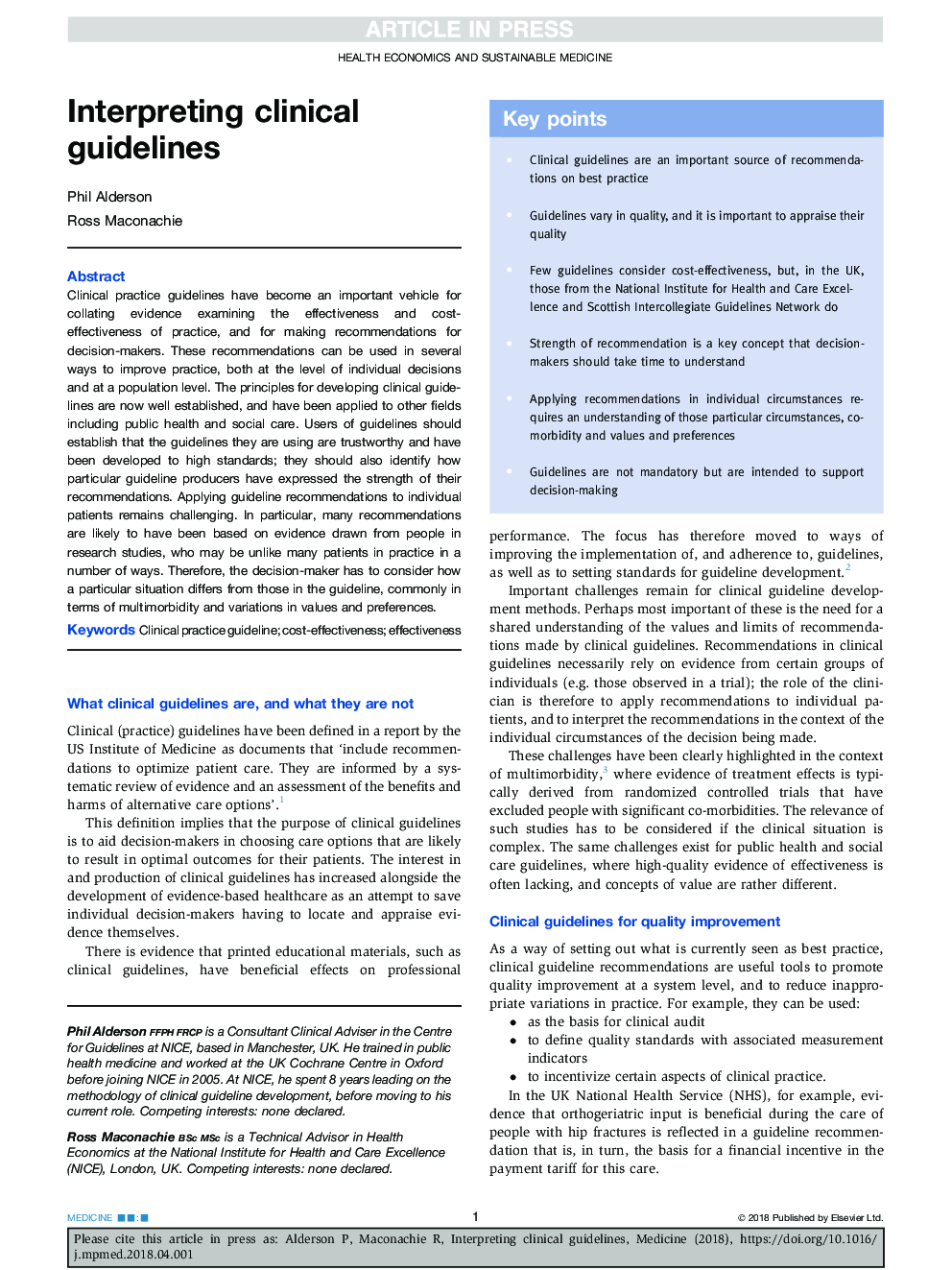| Article ID | Journal | Published Year | Pages | File Type |
|---|---|---|---|---|
| 8763991 | Medicine | 2018 | 4 Pages |
Abstract
Clinical practice guidelines have become an important vehicle for collating evidence examining the effectiveness and cost-effectiveness of practice, and for making recommendations for decision-makers. These recommendations can be used in several ways to improve practice, both at the level of individual decisions and at a population level. The principles for developing clinical guidelines are now well established, and have been applied to other fields including public health and social care. Users of guidelines should establish that the guidelines they are using are trustworthy and have been developed to high standards; they should also identify how particular guideline producers have expressed the strength of their recommendations. Applying guideline recommendations to individual patients remains challenging. In particular, many recommendations are likely to have been based on evidence drawn from people in research studies, who may be unlike many patients in practice in a number of ways. Therefore, the decision-maker has to consider how a particular situation differs from those in the guideline, commonly in terms of multimorbidity and variations in values and preferences.
Related Topics
Health Sciences
Medicine and Dentistry
Medicine and Dentistry (General)
Authors
Phil Alderson, Ross Maconachie,
